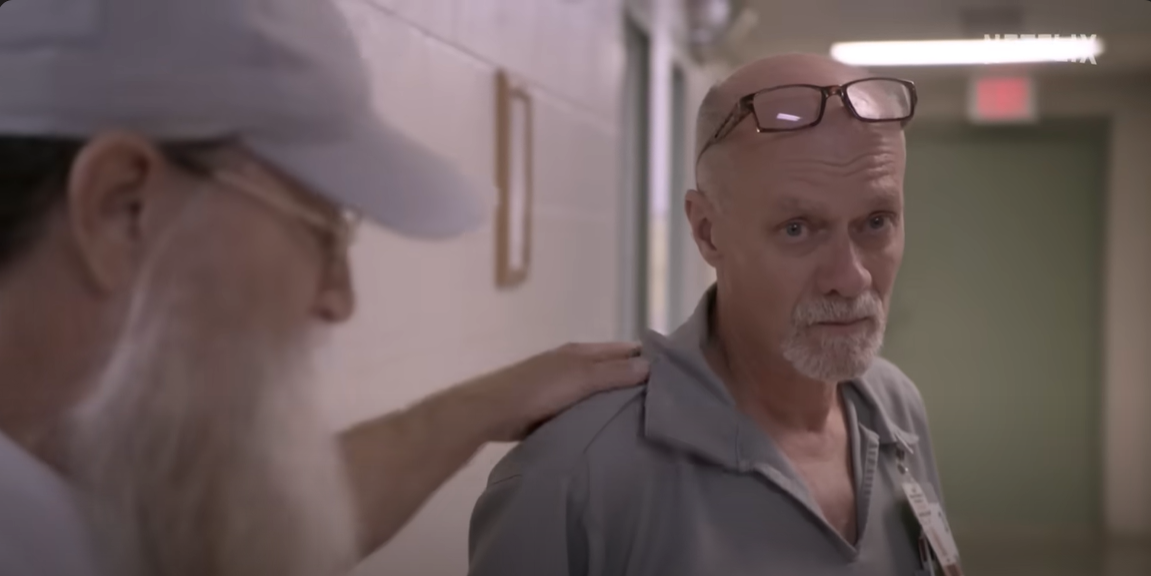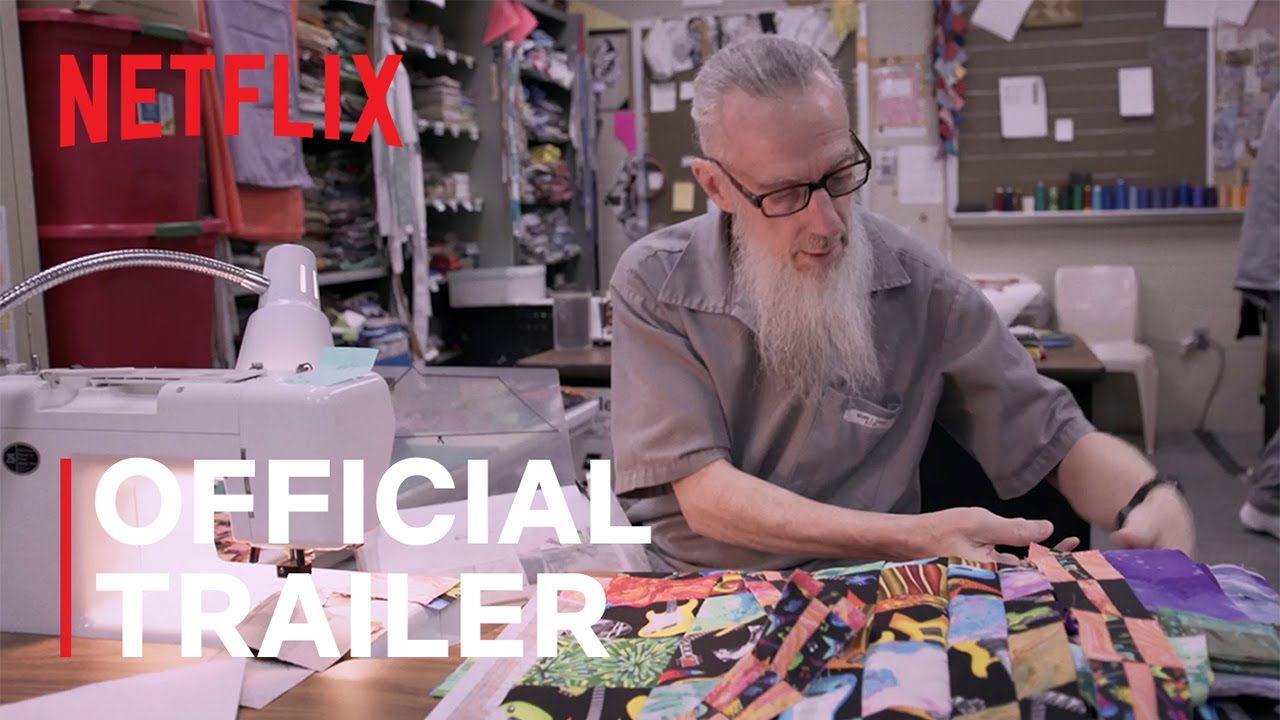Title: Fifteen Groundbreaking Netflix Prison Documentaries Revealing the Intricacies of Incarceration and the Human Condition
Introduction
What is the experiential reality of incarceration in modern society? Netflix’s curated library of prison-related documentaries and docuseries opens a compelling window into the architecture of punishment, rehabilitation, and resilience within carceral institutions. These visual narratives—often harrowing, occasionally redemptive—interrogate the psychological, sociopolitical, and existential dimensions of incarceration across a global spectrum.
This compendium is particularly invaluable for scholars of criminology, sociologists, policy analysts, and those invested in restorative justice frameworks. It includes The Quilters, a 2025 documentary that subverts traditional conceptions of imprisonment by foregrounding artistic collaboration as a form of cognitive and emotional liberation.
Join us in this intellectual traversal through 15 of Netflix’s most seminal prison documentaries, each offering distinct insights into the penal systems, the sociocultural constructs they embody, and the human lives they irrevocably shape.
1. The Quilters (2025)
Significance: An extraordinary ethnographic account of incarcerated women at Missouri’s South Central Correctional Center, The Quilters reimagines confinement through the lens of artistic agency. The documentary meticulously captures how a quilting circle becomes a locus of healing, emotional excavation, and communal solidarity. Each quilt emerges as a textile memoir—infused with symbolic memory, trauma, and future aspirations.
Scholarly Insight: Artistic practices within correctional environments can serve as critical counter-narratives to institutional dehumanization, illuminating pathways to psychosocial restoration.
2. Girls Incarcerated
Significance: This docuseries functions as a longitudinal case study of juvenile female offenders in Indiana’s correctional facilities. Through intimate interviews and unfiltered depictions of behavioral intervention, the series elucidates the complex interplay of trauma, structural disadvantage, and adolescent identity formation within punitive contexts.
Scholarly Insight: Juvenile incarceration reflects broader failures in educational equity, mental health care, and socio-familial networks—requiring multidimensional interventions.
3. 13th
Significance: Directed by Ava DuVernay, 13th offers a rigorously argued thesis linking the Thirteenth Amendment to contemporary mass incarceration. The documentary presents a systemic critique of racial capitalism and carceral expansion, making it a foundational text for critical prison studies.
Scholarly Insight: Structural racism, when embedded in legal and economic systems, perpetuates carceral cycles that disproportionately disenfranchise Black Americans.
4. Time: The Kalief Browder Story
Significance: Through the tragic narrative of Kalief Browder—held at Rikers Island for three years without conviction—this series exposes the ethical and psychological toll of prolonged pretrial detention and solitary confinement.
Scholarly Insight: The case exemplifies how procedural inefficiencies and punitive detention practices can irreversibly traumatize individuals, particularly minors.
5. Inside the World’s Toughest Prisons
Significance: Journalist Raphael Rowe, himself a victim of wrongful imprisonment, undertakes immersive ethnographies in carceral systems worldwide. The series juxtaposes divergent philosophies of correction—ranging from rehabilitative to overtly punitive—and analyzes their socio-cultural underpinnings.
Scholarly Insight: Carceral paradigms are not merely penal—they reflect and reproduce a nation’s ideological stance on humanity, justice, and state control.
6. Jailbirds
Significance: Set in Sacramento County Jail, this quasi-anthropological series captures the informal economies, coded communications (e.g., “toilet talk”), and social hierarchies that constitute life within the jail’s microcosm. It simultaneously entertains and educates.
Scholarly Insight: Inmate-created subcultures reveal adaptive mechanisms within rigid institutional constraints, often challenging external perceptions of order and deviance.
7. First and Last
Significance: By documenting inmates’ initial and final days in incarceration, this series provides a phenomenological study of emotional transition, identity reconstitution, and the societal reintegration process.
Scholarly Insight: The thresholds of incarceration—entry and release—are liminal spaces where institutional control meets individual agency, often culminating in identity rupture or rebirth.
8. Long Shot
Significance: This concise documentary underscores the arbitrary nature of legal outcomes through the lens of a wrongful accusation and an alibi discovered in television production footage. The narrative serves as a chilling commentary on surveillance and justice.
Scholarly Insight: The reliance on technological happenstance for exoneration highlights the fragility of truth-finding mechanisms within the criminal justice system.
9. I Am a Killer
Significance: Featuring unmediated interviews with death row inmates, this series navigates the moral terrain of culpability, remorse, and the sociology of capital punishment. It provides a polyvocal platform where offender and victim narratives intersect.
Scholarly Insight: The death penalty, when viewed through personal testimony, complicates reductive binaries of innocence and guilt, justice and retribution.

10. The Innocence Files
Significance: Centering on The Innocence Project’s pioneering work, this series exposes the latent biases, forensic inaccuracies, and prosecutorial misconduct that underpin many wrongful convictions.
Scholarly Insight: The exoneration of the wrongfully convicted is not just a corrective measure—it is a profound indictment of systemic fallibility and institutional hubris.
11. Captive
Significance: Though not exclusively centered on prison life, Captive explores the high-stakes dynamics of hostage crises involving inmates and correctional staff. It is both a psychological thriller and a study in negotiation ethics.
Scholarly Insight: Crisis situations in carceral settings underscore the volatility of containment systems and the intricate negotiations of power therein.
12. Locked Up: A Mother’s Rage
Significance: This docudrama hybrid interrogates the gendered dimensions of incarceration, focusing particularly on maternal identity and the intergenerational repercussions of imprisonment.
Scholarly Insight: The imprisonment of mothers exacerbates familial disintegration and perpetuates cyclical disadvantage, necessitating gender-responsive penal reform.
13. The Fear of 13
Significance: Told entirely through the perspective of a death row inmate, this monologue-driven film becomes an exercise in narrative agency. The documentary subverts expectations through revelatory storytelling.
Scholarly Insight: The capacity for self-narration within oppressive systems can constitute a form of epistemic resistance and psychological survival.
14. Crime + Punishment
Significance: An investigative masterpiece, this documentary chronicles the efforts of NYPD whistleblowers to challenge racially discriminatory quotas and unethical practices. Though focused on law enforcement, it unpacks the pre-carceral forces shaping incarceration.
Scholarly Insight: Policing practices form the front end of the criminal justice pipeline, where systemic biases become structurally encoded and operationalized.
15. Unseen (Upcoming)
Significance: This forthcoming docuseries endeavors to restore narrative visibility to incarcerated individuals who have been forgotten by society. Through multi-perspective interviews, it aims to reconstruct fragmented biographies.
Scholarly Insight: Memory, both institutional and public, plays a crucial role in the social death or survival of prisoners—rendering acts of narrative reclamation inherently political.
Frequently Asked Questions
Q1: Are these Netflix documentaries based on empirical evidence or dramatization?
Yes, the majority are constructed upon rigorous archival research, authentic testimonies, and unfiltered institutional access, ensuring a high degree of veracity.
Q2: What accounts for the surge in popularity of prison documentaries?
Rising public discourse on carceral reform, racial justice, and systemic inequality has generated heightened demand for visual narratives that humanize and critically examine incarceration.
Q3: What distinguishes The Quilters from traditional prison narratives?
It transcends punitive portrayals by highlighting rehabilitative creativity and community-building, challenging dominant carceral tropes through a feminist and therapeutic lens.
Q4: Do these documentaries contain distressing content?
While some include graphic scenes or language to preserve narrative authenticity, their primary intent is educational rather than exploitative.
Q5: Are these documentaries viable for academic integration?
Absolutely. They serve as exemplary pedagogical tools for disciplines such as criminology, sociology, psychology, gender studies, and visual anthropology.

Conclusion: Reimagining Incarceration Through the Documentary Lens
Netflix’s prison documentary corpus transcends voyeuristic consumption, inviting viewers into profound engagement with the moral, psychological, and political contours of confinement. From the judicial travesties laid bare in The Innocence Files to the redemptive tapestry of The Quilters, each film offers a textured narrative that interrogates and reconfigures our collective understanding of justice.
For academics, reform advocates, and reflective viewers alike, these documentaries constitute a critical archive—one that not only documents but dignifies the lives often rendered invisible within the prison-industrial complex.
Meta Description:
Discover fifteen deeply analytical Netflix prison documentaries that interrogate justice, identity, and institutional reform. Don’t miss The Quilters, a powerful 2025 feature redefining art and rehabilitation behind bars.
Tags:
Netflix documentaries, carceral studies, restorative justice, The Quilters, Netflix 2025, critical prison theory, systemic reform, narrative justice, documentary scholarship
Longtail Tags:
best Netflix documentaries on incarceration 2025, transformative justice in prison films, narrative ethics in docuseries, educational prison documentaries, feminist interventions in carceral media
Content Development Strategies:
- Employ complex narrative structure and intersectional analysis for advanced scholarly appeal.
- Utilize SEO-optimized terminology to target academic and policy-oriented audiences.
- Embed critical theory and praxis language to position the content within graduate discourse.
- Incorporate citation recommendations for deeper research engagement.
- Continuously update with emergent documentary releases to retain topical relevance and academic utility.
